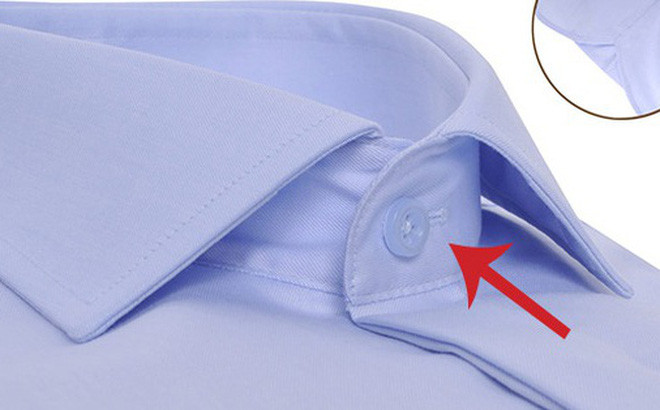Everyone wore shirts but didn't know the existence of this confusing detail
Have you ever noticed that the defect on the collar of a shirt is horizontal while other defects are vertical?
Shirts are one of the indispensable items in everyone's wardrobe. But wearing many shirts is that, will you ever notice this extremely small detail?
Is that the upper part of the collar of the shirt that is usually horizontal , while the other defects are vertical?
Turns out, this is not the manufacturer's fault but it is a calculation with the sophistication of the garment.

Defects are located on the side of the collar and the final defect on the bodice is usually made of thick thread.
Specifically, the horizontal deflection will allow the button (button) to withstand more force from the operation and bracing force, pulling . than the vertical defect button without stretching the shirt or hole. defects.
Besides, the imperfections are located on the collar and the final imperfection on the flap is usually made of thick , tough thread to prevent it from opening.
In addition, there are also opinions that the horizontal defect in the collar will keep the collar standing, not easy to fall, and the horizontal defect at the bottom helps the shirt to not be moved much, helping the shirt flap more straight.
A little more information for those who love garment history! The imperfections and buttons are always together, but you may or may not be invented at the same time, but are separated by thousands of years.
In ancient times, the ancient Greeks and Romans had to use the cuffs and small noose strings on their shoulders to keep the shirt from falling, shuffled.
And it wasn't until the 13th century that Europeans began to create defects. This invention has inspired many people, and from now on, defects and buttons become inseparable couples.
- Manufacture of biodegradable T-shirts in 12 weeks
- This cool t-shirt will make you invisible to AI
- T-shirts turn into life jackets in a flash to help prevent drowning
- Self-cleaning shirt, which can repel stains and smells
- Mysteriously annoying holes on T-shirts - why do you wear them for a few times?
- Use cigarette butts to make T-shirts
- 'Close up' smart shirt helps reduce stress
- 'Piggyback' text online
- Students make waterproof T-shirts
- 5 secrets of gentleness for men
- The girl revived after a night of freezing, making medicine impossible to explain
- Simple and easy to understand explanation of the existence of each individual in this world
 'Fine laughs' - Scary and painful torture in ancient times
'Fine laughs' - Scary and painful torture in ancient times The sequence of numbers 142857 of the Egyptian pyramids is known as the strangest number in the world - Why?
The sequence of numbers 142857 of the Egyptian pyramids is known as the strangest number in the world - Why? History of the iron
History of the iron What is alum?
What is alum?